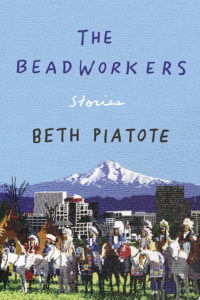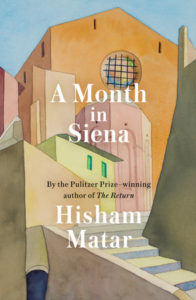The 10 new books you should be reading this week.
Every week, a new crop of great new books hit the shelves. If we could read them all, we would, but since time is finite and so is the human capacity for page-turning, here are a few of the ones we’ll be starting with. What are you reading this week?
FICTION + POETRY
 John Le Carré, Agent Running in the Field
John Le Carré, Agent Running in the Field
Viking
John le Carré’s 25th novel is set in London in 2018, and will apparently be tackling “the division and rage at the heart of our modern world.” Otherwise, we’ve got very few details to work with: the publisher tells us that the protagonist, “in a desperate attempt to resist the political turbulence swirling around him, makes connections that will take him down a very dangerous path.” Which tells us exactly nothing, so we’ll all just have to wait patiently—or buy a copy.
–Dwyer Murphy, CrimeReads Managing Editor
 Robert Pinsky, ed., The Mind Has Cliffs of Fall: Poems at the Extremes of Feeling
Robert Pinsky, ed., The Mind Has Cliffs of Fall: Poems at the Extremes of Feeling
W. W. Norton & Company
Stephen Greenblatt called this collection “a thrilling roller-coaster ride of an anthology. Just when you think you have mastered the pitch and roll of one emotional extreme, you find yourself careening around a bend into a different extreme. And Pinsky’s individual selections are at once deft and surprising: a Renaissance Old Master like Fulke Greville sits cheek-by-jowl with poets like Keetje Kuipers and Katie Willingham, born within hailing distance of the present. The collection is a perfect introduction to poetry’s enduring power to explore the utmost bounds of our experience.” Sounds like exactly what I’d like to curl up with this week, while ignoring opportunities to have actual experiences.
–Emily Temple, Senior Editor
 Jami Attenberg, All This Could Be Yours
Jami Attenberg, All This Could Be Yours
HMH
I love secrets—even if they’re fictional secrets. All This Could Be Yours is, according to its publisher, “a novel of family secrets” so I am fully prepared to devour it. Add to that how much I adored Attenberg’s last novel All Grown Up, which managed an enviably deft balance of sharp humor and kindness, and I’m pounding my fork and knife on the table chanting “BOOK! BOOK! BOOK!” in anticipation.
–Jessie Gaynor, Social Media Editor
 Michael Connelly, The Night Fire
Michael Connelly, The Night Fire
Little, Brown
Fans of Harry Bosch (and Michael Connelly) have read along eagerly in recent years as one of the most iconic characters in the annals of crime fiction has grown ever more complex and intriguing through his work with LAPD cold cases, and through his connection to Renee Ballard, with whom he’s teaming up again this year in The Night Fire. Bosch’s mentor on the force dies at the start of this one, and his widow gives Bosch an unexpected bequeathment: a murder book from a decades-old case. The case is fascinating in its own right, but you know that Bosch’s passion and his sense of duty is going to be extra-stoked now that he’s working on behalf of his old rabbi. Every fall, Connelly finds a way to bring out some new magic in this classic series.
–Dwyer Murphy, CrimeReads Managing Editor

Beth Piatote, The Beadworkers: Stories
Counterpoint
A debut collection from an associate professor of Native American studies at the University of California, Berkeley which Luis Alberto Urrea called “a ritual of clarity, transformation, and wonder. Elegant and vivid, her book is alive, and it will make its readers see the world in a bright new light.” Can’t wait to read this one.
–Emily Temple, Senior Editor
NONFICTION
 Edmund Morris, Edison: A Life
Edmund Morris, Edison: A Life
Random House
Just before he died this spring, Edmund Morris had completed final changes to his years-in-the-making life of Thomas Edison, still the most prolific and transformative inventor in American history. We think of Edison as the inventor of the light bulb, but more than 1,000 other patents poured out of his Menlo Park lab in Edison’s lifetime. The phonograph. Early film technology. Improvements on the telegraph. Microphones in telephones. Motion picture cameras. Distributors for electrical power. He dabbled in electronic voting. He made a kind of early tattoo gun. Batteries for electric cars. The list is astonishing, and in this huge, tremendously well researched biography, the National Book Award and Pulitzer Prize winning Morris has finally given him the biography he deserves.
–John Freeman, Executive Editor
 Nathalia Holt, The Queens of Animation: The Untold Story of the Women Who Transformed the World of Disney and Made Cinematic History
Nathalia Holt, The Queens of Animation: The Untold Story of the Women Who Transformed the World of Disney and Made Cinematic History
Little, Brown
Long before Disney released Frozen, its first female-directed, full-length feature, a group of women were working to animate the stories that enthralled children across the country. Nathalia Holt looks at the inner workings of the Disney studios and the personal stories of the women whose artistry and skill helped form the basis for Disney’s golden age, along with what it took for them to contribute in an entertainment industry led by men.
–Corinne Segal, Senior Editor
 Alison Roman, Nothing Fancy: Unfussy Food for Having People Over
Alison Roman, Nothing Fancy: Unfussy Food for Having People Over
Clarkson Potter
Despite the fact that I could never make those shortbread chocolate chip cookies the way it seems they are meant to be made, I did feed everyone I know on Alison Roman’s spiced chickpea stew last winter, and so I am personally going to run right out and buy her cookbook of unfancy, unfussy, but surely delicious food.
–Emily Temple, Senior Editor
 Alexandra Jacobs, Still Here: The Madcap, Nervy, Singular Life of Elaine Stritch
Alexandra Jacobs, Still Here: The Madcap, Nervy, Singular Life of Elaine Stritch
FSG
I would read anything about theatrical legend Elaine Stritch, whose career took her from the highball-wielding brassiness of Stephen Sondheim’s Company to the tornado-esque maternal force she wielded in as Jack Donaghy’s mother in 30 Rock. This biography offers a close look at her life, from the theaters and sound stages of Hollywood and London to personal challenges.
–Corinne Segal, Senior Editor
 Hisham Matar, A Month in Siena
Hisham Matar, A Month in Siena
Random House
From the author of The Return comes a new volume recounting a month spent in Siena, Italy—where Matar “immersed himself in eight significant works from the Sienese School of painting, which flourished from the thirteenth to the fifteenth centuries.” This book is an account of that time, and of how art can move us, and of how cities can change us.
–Emily Temple, Senior Editor





